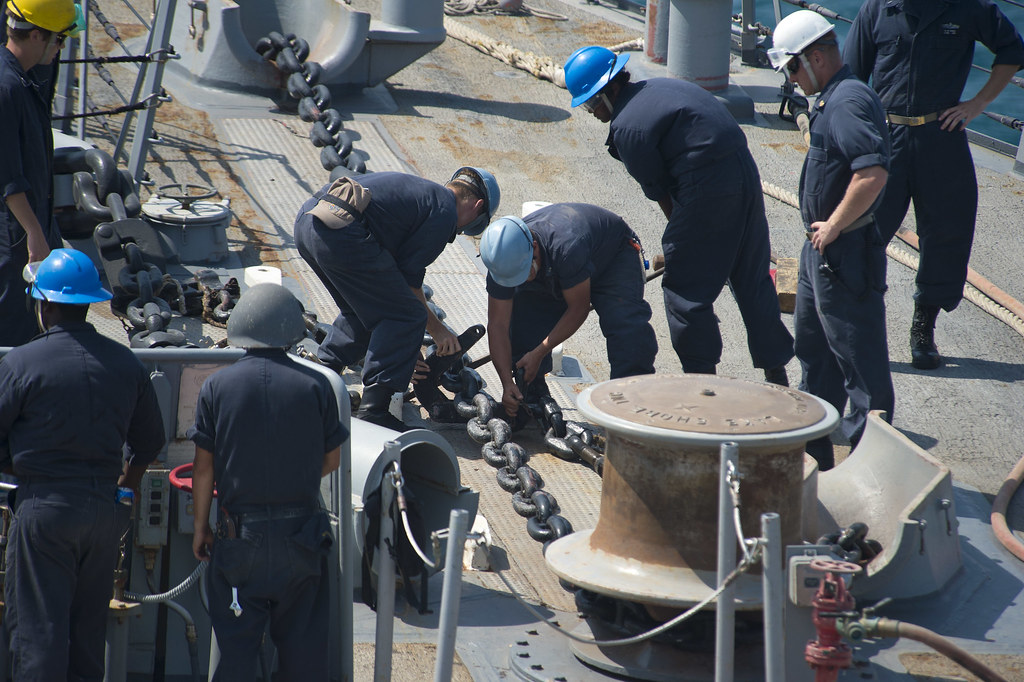The mechanics of it are largely unchanged over the last hundred years.
Anchor is shackled to “shots” of chain, 15 fathoms long, these are fastened together with special links that can be opened. The shots are always painted, black is traditional in the USN.
Chain is measured by its ‘wire size’ which is the diameter of the “bent” material. So 4" stud chain might be 16-24" long and 12" wide, per link.
When the anchors are hauled in, and “housed” in the “hawse pipes” their weight is actually taken up using a “stopper.” This is a “pelican hook” which engages the links, which is fastened to a turnbuckle, often with a short length of chain,. to a padeye nearby. On larger ships, especially those with a long run of chain upon the deck, more stoppers (up to three) are used.
With the weight on the stopper(s), the capstan can be slacked, and the rest of the anchor rode allowed to fall into the locker below deck. This allows the capstan to be used for other anchor rodes, or to heave mooring lines.
On ships with windlasses, instead of capstans, stoppers are also used, but in a different form, as the anchor rodes are rarely unshipped from the wildcats on the windlass.
USN Anchor chain is always washed as it comes aboard, so it should be clean. USN practice is to keep the chain well-painted, too. it really ought not be faded, and never rusty. (You trust the ship and all the lives aboard to that chain, you do not let it rust from neglect.) One of the least favorite tasks for the Deck Department is painting the chain lockers. The easiest part of that is the flaking the chain out over the deck (needle guns and flaking hammers in the chain locker being much, much worse).



